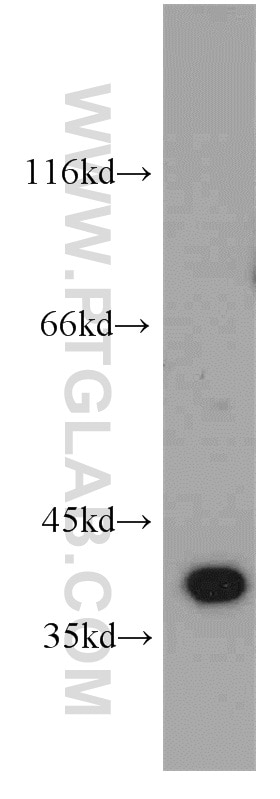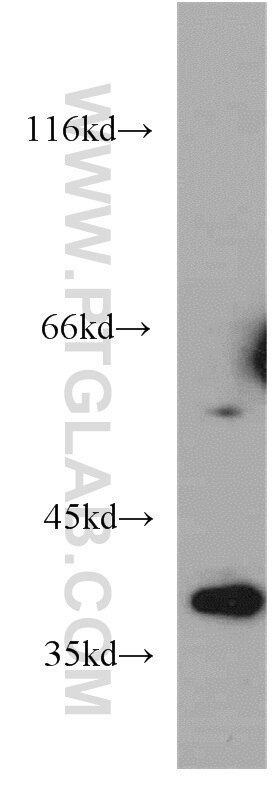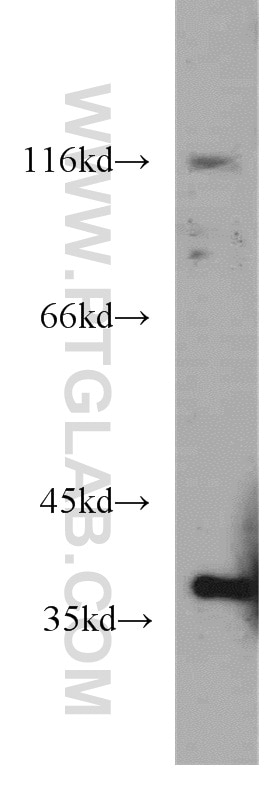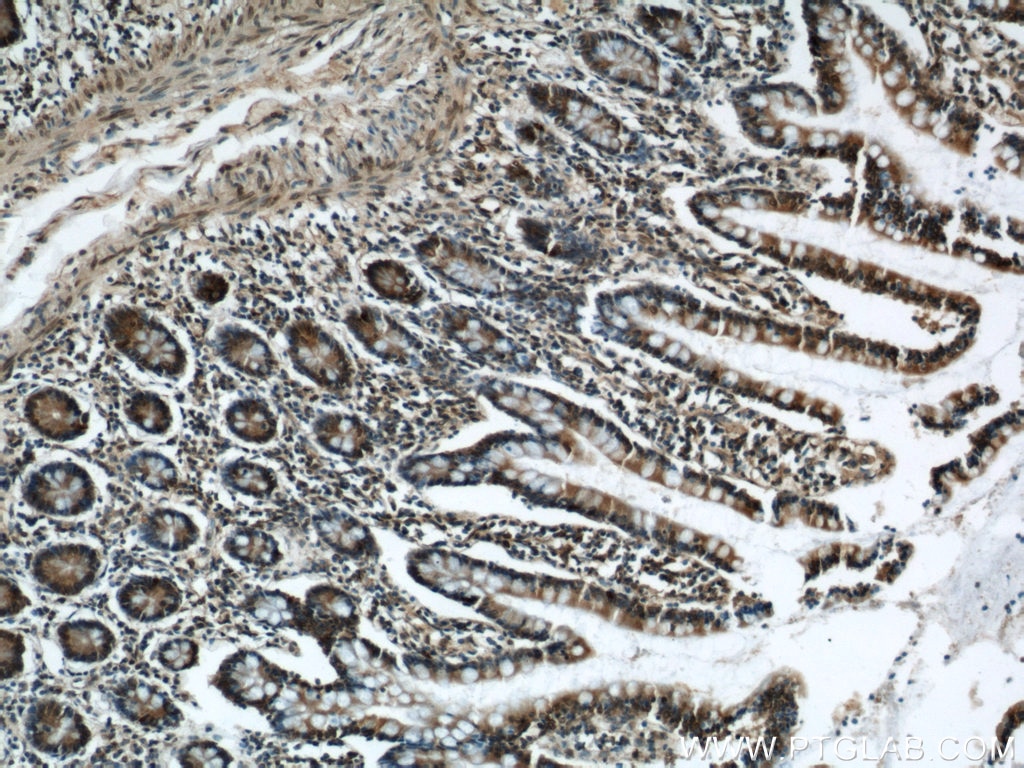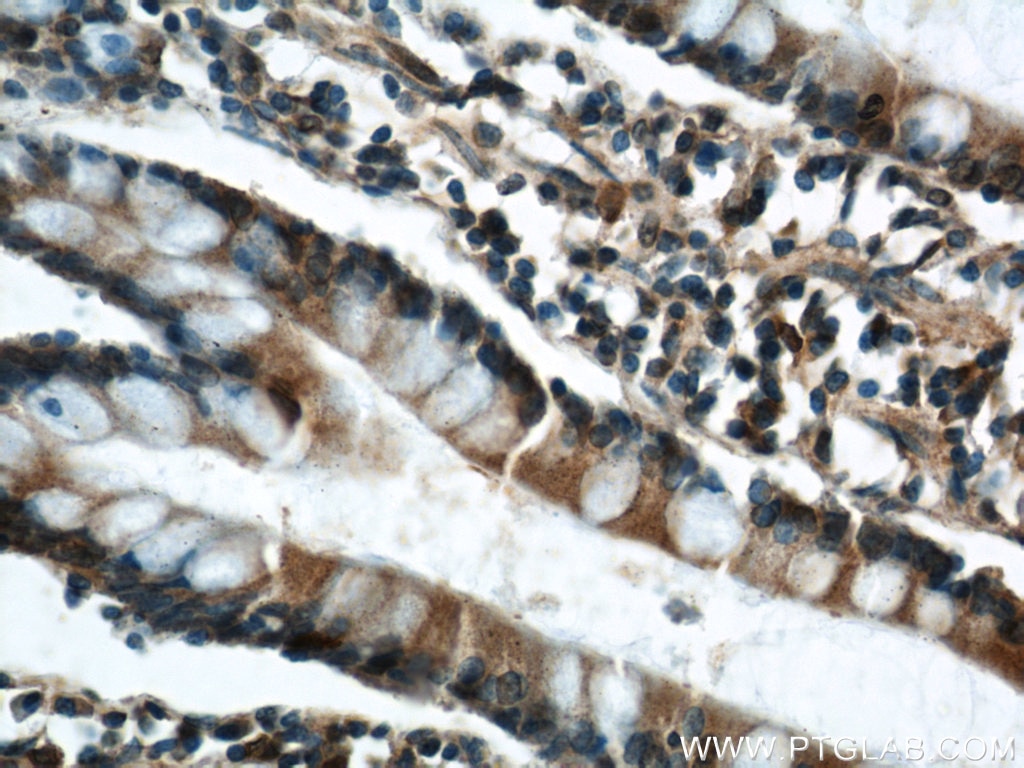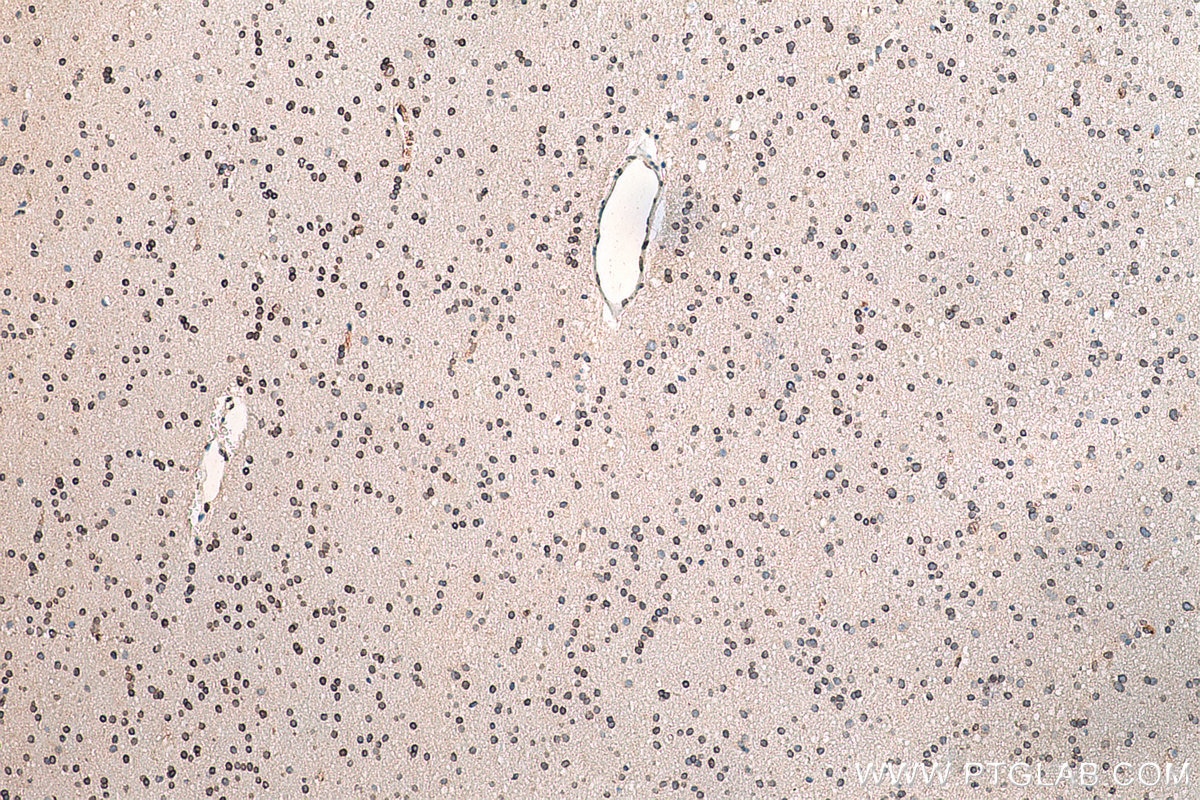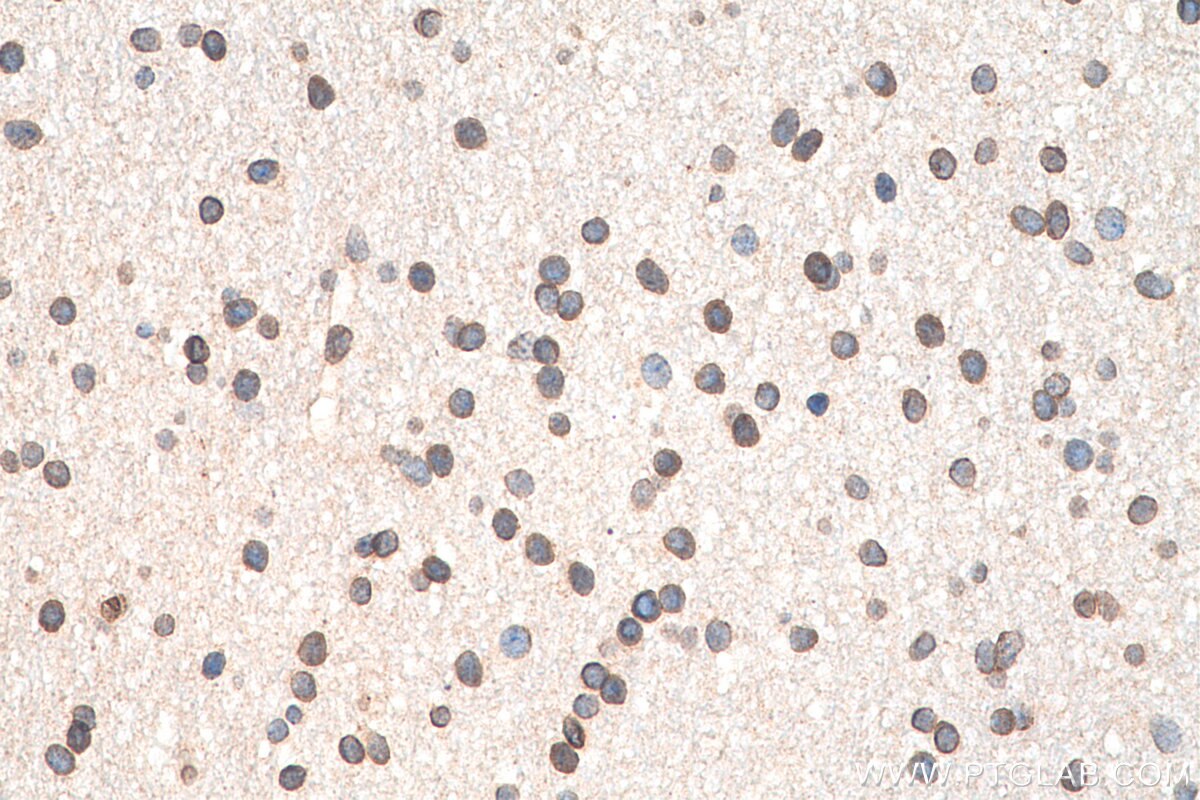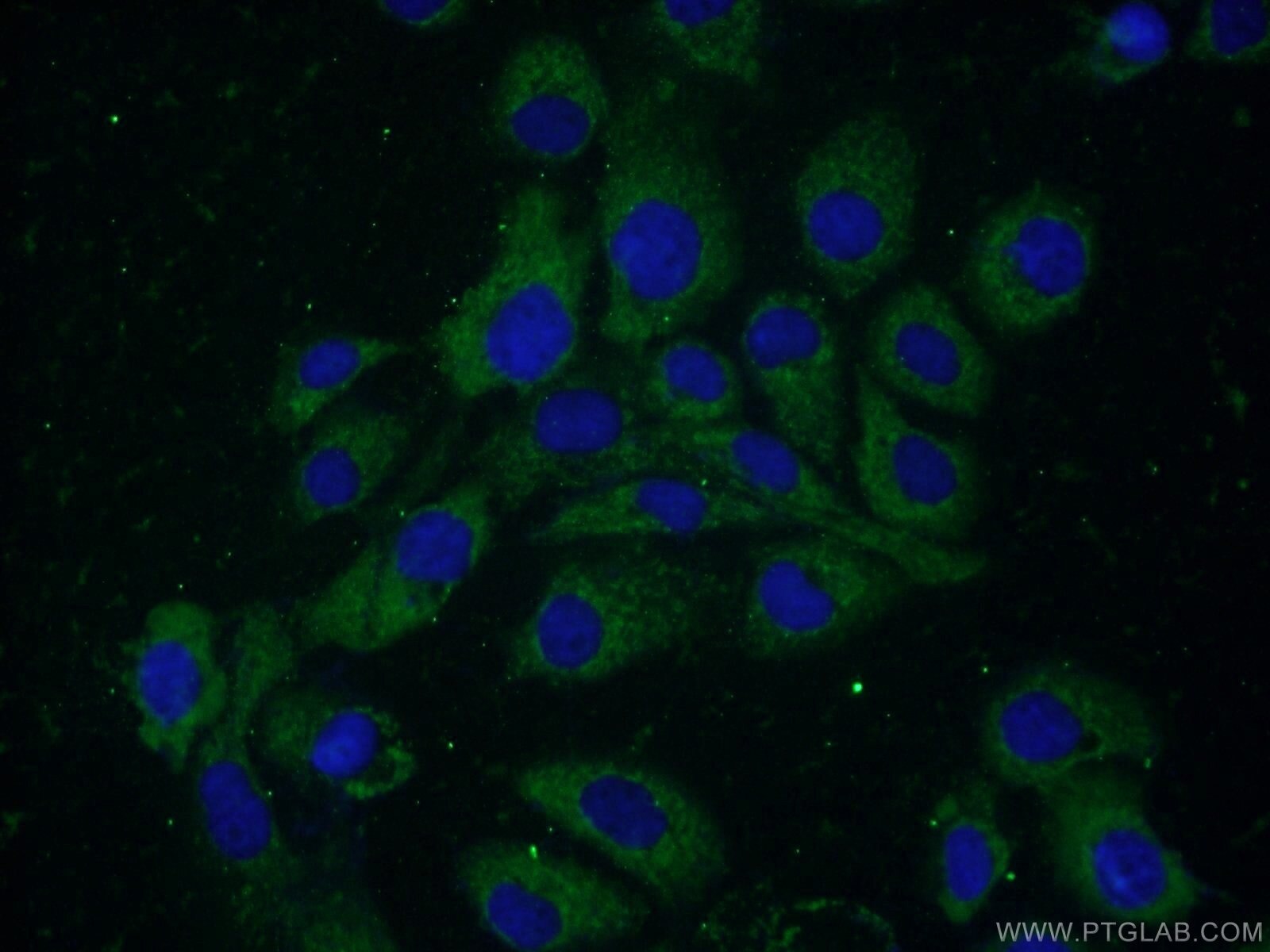Anticorps Polyclonal de lapin anti-ELOVL4
ELOVL4 Polyclonal Antibody for IF, IHC, WB, ELISA
Hôte / Isotype
Lapin / IgG
Réactivité testée
Humain, rat, souris
Applications
WB, IHC, IF, ELISA
Conjugaison
Non conjugué
N° de cat : 55023-1-AP
Synonymes
Galerie de données de validation
Applications testées
| Résultats positifs en WB | cellules Y79, cellules A431, tissu cérébral de souris |
| Résultats positifs en IHC | tissu d'intestin grêle humain, tissu de gliome humain il est suggéré de démasquer l'antigène avec un tampon de TE buffer pH 9.0; (*) À défaut, 'le démasquage de l'antigène peut être 'effectué avec un tampon citrate pH 6,0. |
| Résultats positifs en IF | cellules A431 |
Dilution recommandée
| Application | Dilution |
|---|---|
| Western Blot (WB) | WB : 1:500-1:2000 |
| Immunohistochimie (IHC) | IHC : 1:50-1:500 |
| Immunofluorescence (IF) | IF : 1:10-1:100 |
| It is recommended that this reagent should be titrated in each testing system to obtain optimal results. | |
| Sample-dependent, check data in validation data gallery | |
Applications publiées
| WB | See 6 publications below |
| IHC | See 2 publications below |
Informations sur le produit
55023-1-AP cible ELOVL4 dans les applications de WB, IHC, IF, ELISA et montre une réactivité avec des échantillons Humain, rat, souris
| Réactivité | Humain, rat, souris |
| Réactivité citée | rat, Humain, souris |
| Hôte / Isotype | Lapin / IgG |
| Clonalité | Polyclonal |
| Type | Anticorps |
| Immunogène | Peptide |
| Nom complet | elongation of very long chain fatty acids (FEN1/Elo2, SUR4/Elo3, yeast)-like 4 |
| Masse moléculaire calculée | 37 kDa |
| Poids moléculaire observé | 37-40 kDa |
| Numéro d’acquisition GenBank | NM_022726 |
| Symbole du gène | ELOVL4 |
| Identification du gène (NCBI) | 6785 |
| Conjugaison | Non conjugué |
| Forme | Liquide |
| Méthode de purification | Purification par affinité contre l'antigène |
| Tampon de stockage | PBS avec azoture de sodium à 0,02 % et glycérol à 50 % pH 7,3 |
| Conditions de stockage | Stocker à -20 ℃. L'aliquotage n'est pas nécessaire pour le stockage à -20oC Les 20ul contiennent 0,1% de BSA. |
Informations générales
ELOVL4, also named as ADMD, STGD2 and STGD3, belongs to the ELO family. It is a component of the fatty acid elongation system. Elovl4 is involved in the biosynthesis of very long chain fatty acids. It seems to represent a photoreceptor-specific component of the fatty acid elongation system residing on the endoplasmic reticulum. ELOVL4 may be implicated in docosahexaenoic acid (DHA) biosynthesis, which requires dietary consumption of the essential alpha-linolenic acid and a subsequent series of three elongation steps. Defects in ELOVL4 are the cause of Stargardt disease type 3 (STGD3). The antibody is specific to ELOVL4.
Protocole
| Product Specific Protocols | |
|---|---|
| WB protocol for ELOVL4 antibody 55023-1-AP | Download protocol |
| IHC protocol for ELOVL4 antibody 55023-1-AP | Download protocol |
| IF protocol for ELOVL4 antibody 55023-1-AP | Download protocol |
| Standard Protocols | |
|---|---|
| Click here to view our Standard Protocols |
Publications
| Species | Application | Title |
|---|---|---|
Ocul Surf PPARγ regulates meibocyte differentiation and lipid synthesis of cultured human meibomian gland epithelial cells (hMGEC). | ||
Int J Mol Sci In Human and Mouse Spino-Cerebellar Tissue, Ataxin-2 Expansion Affects Ceramide-Sphingomyelin Metabolism. | ||
Invest Ophthalmol Vis Sci Isotretinoin Impairs the Secretory Function of Meibomian Gland Via the PPARγ Signaling Pathway. | ||
Lipids Phytosphingosine Increases Biosynthesis of Phytoceramide by Uniquely Stimulating the Expression of Dihydroceramide C4-desaturase (DES2) in Cultured Human Keratinocytes. | ||
Ocul Surf Anomaly of cornea and ocular adnexa in spinster homolog 2 (Spns2) knockout mice |
